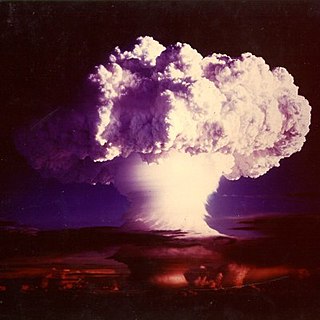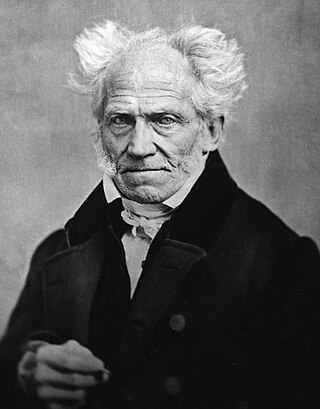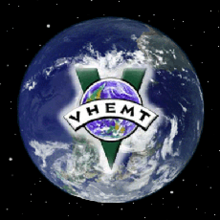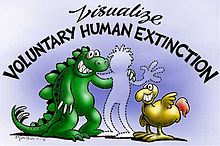
Misanthropy is the general hatred, dislike, or distrust of the human species, human behavior, or human nature. A misanthrope or misanthropist is someone who holds such views or feelings. Misanthropy involves a negative evaluative attitude toward humanity that is based on humankind's flaws. Misanthropes hold that these flaws characterize all or at least the greater majority of human beings. They claim that there is no easy way to rectify them short of a complete transformation of the dominant way of life. Various types of misanthropy are distinguished in the academic literature based on what attitude is involved, at whom it is directed, and how it is expressed. Either emotions or theoretical judgments can serve as the foundation of the attitude. It can be directed toward all humans without exception or exclude a few idealized people. In this regard, some misanthropes condemn themselves while others consider themselves superior to everyone else. Misanthropy is sometimes associated with a destructive outlook aiming to hurt other people or an attempt to flee society. Other types of misanthropic stances include activism by trying to improve humanity, quietism in the form of resignation, and humor mocking the absurdity of the human condition.

Extinction is the termination of a taxon by the death of its last member. A taxon may become functionally extinct before the death of its last member if it loses the capacity to reproduce and recover. Because a species' potential range may be very large, determining this moment is difficult, and is usually done retrospectively. This difficulty leads to phenomena such as Lazarus taxa, where a species presumed extinct abruptly "reappears" after a period of apparent absence.
Green anarchism, also known as ecological anarchism or eco-anarchism, is an anarchist school of thought that focuses on ecology and environmental issues. It is an anti-capitalist and anti-authoritarian form of radical environmentalism, which emphasises social organization, freedom and self-fulfillment.
Overconsumption describes a situation where a consumer overuses their available goods and services to where they can't, or don't want to, replenish or reuse them. In microeconomics, this may be described as the point where the marginal cost of a consumer is greater than their marginal utility. The term overconsumption is quite controversial in use and does not necessarily have a single unifying definition. When used to refer to natural resources to the point where the environment is negatively affected, it is synonymous with the term overexploitation. However, when used in the broader economic sense, overconsumption can refer to all types of goods and services, including manmade ones, e.g. "the overconsumption of alcohol can lead to alcohol poisoning". Overconsumption is driven by several factors of the current global economy, including forces like consumerism, planned obsolescence, economic materialism, and other unsustainable business models and can be contrasted with sustainable consumption.

The Church of Euthanasia (CoE) is a religion and antinatalist activist organization founded by Chris Korda and Robert Kimberk in Boston, Massachusetts in 1992. As stated on its website, it is "a non-profit educational foundation devoted to restoring balance between Humans and the remaining species on Earth." Its members affirm that this can only turn into a reality by a massive voluntary population reduction, which will depend on a leap in human consciousness to species-awareness. According to Korda, it is likely that this church is the world's only anti-human religion.

Paul Ralph Ehrlich is an American biologist known for his predictions and warnings about the consequences of population growth, including famine and resource depletion. Ehrlich is the Bing Professor Emeritus of Population Studies of the Department of Biology of Stanford University.
Voluntary childlessness or childfreeness describes the active choice not to have children. The word childfree first appeared sometime before 1901 and entered common usage among feminists during the 1970s. The suffix -free refers to the freedom and personal choice of those to pick this lifestyle. The meaning of the term childfree extends to encompass the children of others, and this distinguishes it further from the more usual term childless, which is traditionally used to express the idea of having no children, whether by choice or by circumstance. In the research literature, the term child-free or childfree has also been used to refer to parents currently not living with their children, for example because they have already grown up and moved out. In common usage, childfree might be used in the context of venues or activities wherein (young) children are excluded even if the people involved may be parents, such as a childfree flight or a childfree restaurant.
Anne Howland Ehrlich is an American scientist and author who is best known for the predictions she made as a co-author of The Population Bomb with her colleague and husband, Paul R. Ehrlich. She has written or co-written more than thirty books on overpopulation and ecology, including The Stork and the Plow (1995), with Gretchen Daily, and The Dominant Animal: Human Evolution and the Environment (2008), among many other works. She also has written extensively on issues of public concern such as population control, environmental protection, and environmental consequences of nuclear war.

Human extinction is the hypothetical end of the human species, either by population decline due to extraneous natural causes, such as an asteroid impact or large-scale volcanism, or via anthropogenic destruction (self-extinction), for example by sub-replacement fertility.

Environmentalism or environmental rights is a broad philosophy, ideology, and social movement about supporting life, habitats, and surroundings. While environmentalism focuses more on the environmental and nature-related aspects of green ideology and politics, ecologism combines the ideology of social ecology and environmentalism. Ecologism is more commonly used in continental European languages, while environmentalism is more commonly used in English but the words have slightly different connotations.
The "World Scientists' Warning to Humanity" was a document written in 1992 by Henry W. Kendall and signed by about 1,700 leading scientists. Twenty-five years later, in November 2017, 15,364 scientists signed "World Scientists' Warning to Humanity: A Second Notice" written by William J. Ripple and seven co-authors calling for, among other things, human population planning, and drastically diminishing per capita consumption of fossil fuels, meat, and other resources. The second notice has more scientist cosigners and formal supporters than any other journal article ever published.
Ecofascism is a term used to describe individuals and groups which combine environmentalism with fascism.
Human overpopulation describes a concern that human populations may become too large to be sustained by their environment or resources in the long term. The topic is usually discussed in the context of world population, though it may concern individual nations, regions, and cities.

The World Without Us is a 2007 non-fiction book about what would happen to the natural and built environment if humans suddenly disappeared, written by American journalist Alan Weisman and published by St. Martin's Thomas Dunne Books. It is a book-length expansion of Weisman's own February 2005 Discover article "Earth Without People". Written largely as a thought experiment, it outlines, for example, how cities and houses would deteriorate, how long man-made artifacts would last, and how remaining lifeforms would evolve. Weisman concludes that residential neighborhoods would become forests within 500 years, and that radioactive waste, bronze statues, plastics and Mount Rushmore would be among the longest-lasting evidence of human presence on Earth.

Antinatalism or anti-natalism is a family of philosophical views that are critical of reproduction — they consider coming into existence as bad or deem procreation as immoral. Antinatalists thus argue that humans should abstain from having children. Antinatalist views are not necessarily limited only to humans, but may encompass all sentient creatures, claiming that coming into existence is a harm for sentient beings in general.

A global catastrophic risk or a doomsday scenario is a hypothetical event that could damage human well-being on a global scale, even endangering or destroying modern civilization. An event that could cause human extinction or permanently and drastically curtail humanity's existence or potential is known as an "existential risk."
Deep ecology is an environmental philosophy that promotes the inherent worth of all living beings regardless of their instrumental utility to human needs, and the restructuring of modern human societies in accordance with such ideas.
In environmental science, a population "overshoots" its local carrying capacity — the capacity of the biome to feed and sustain that population — when that population has not only begun to outstrip its food supply in excess of regeneration, but actually shot past that point, setting up a potentially catastrophic crash of that feeder population once its food populations have been consumed completely. Overshoot can apply to human overpopulation as well as other animal populations: any life-form that consumes others to sustain itself.

Environmental issues are disruptions in the usual function of ecosystems. Further, these issues can be caused by humans or they can be natural. These issues are considered serious when the ecosystem cannot recover in the present situation, and catastrophic if the ecosystem is projected to certainly collapse.

Scenarios in which a global catastrophic risk creates harm have been widely discussed. Some sources of catastrophic risk are anthropogenic, such as global warming, environmental degradation, and nuclear war. Others are non-anthropogenic or natural, such as meteor impacts or supervolcanoes. The impact of these scenarios can vary widely, depending on the cause and the severity of the event, ranging from temporary economic disruption to human extinction. Many societal collapses have already happened throughout human history.













